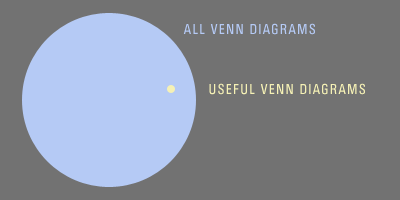Documentation/Process
Why Crunch Mode Doesn’t Work is an in-depth explanation of why working long hours is ineffective. Ironically, I’m reading this article from work on a holiday because I work too hard. (via)
Some really worthwhile posts at 37sig (1, 2, 3) notwithstanding, there is no easy formula or Venn diagram* for successful project or client management. You don’t simply Discover. Define. Design. Develop.TM your way to a great design. No, as Jeff suggests, design is messier than that. But there are ingredients. One of them is trust. In particular, you need your clients to trust you, to trust your perspective, your experience, your process (whatever it is). And you have to earn that trust.
*
Sadly, Use of Narrative in Interactive Design doesn’t really divulge much (or at least I don’t see much narrative, so much as scenario), but I was quite struck by how the standard model of narrative development (in the authors’ diagram) quite accurately describes the typical project’s design process!  .
.
Jesse continues to apply conceptual rigor to web design and development process with the nine pillars of successful web teams . As with his elements of user experience diagram, don’t make the mistake of seeing the nine as job descriptions or even distinct roles.
Oldies, but goodies: Seven Secrets to Good Brainstorming Six Surefire Ways to Kill a Brainstorm IDEO Rules of Brainstorming Facilitator Guidelines (PDF)
Experience Design Relationship Model. Yep, that’s about how it is… now if we could figure out how all the dotted lines actually work, we’d be set ;) (via the ever-vigilant cwodtke)
Sitemaps, Storyboards, and Specifications: A Sketch of Web Site Design Practice. Great, now when a relative asks what I do I’ll just send them to this article ;) (via iaslash)
Finally got around to posting a link to Christina’s Boxes and Arrows article on IA deliverables. One thing I’d add, though, is that in addition to being used by IAs, many of these deliverables are used as client pacification tools: “Look at the pretty diagram… you are getting sleepy… everything is under control.”
Richard I. Anderson’s Web Page on Overcoming [Organizational] Obstacles to User-Centered Design.